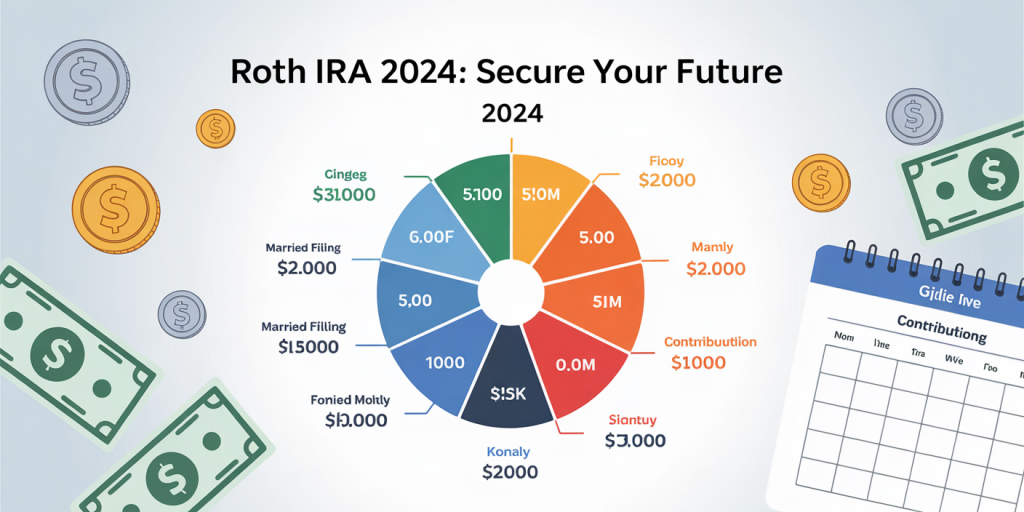How to Start a Roth IRA and Why It’s So Powerful
In the realm of personal finance, few tools offer the combination of tax advantages and flexibility quite like the Roth Individual Retirement Account (IRA). For investors seeking long-term wealth accumulation with tax-free growth, the Roth IRA has become a go-to option. In this article, we will explore how to start a Roth IRA, the benefits that make it such a powerful retirement vehicle, and practical tips to maximize its potential.

Understanding the Fundamentals of a Roth IRA
A Roth IRA is a type of individual retirement account that allows your investments to grow tax-free. Unlike traditional IRAs—where contributions might be tax-deductible but withdrawals are taxed—the Roth IRA is funded with after-tax dollars. This means you pay taxes upfront, but qualified withdrawals in retirement are entirely tax-free.
The appeal of this structure lies in its potential to reduce your future tax burden. For example, young professionals who expect to be in a higher tax bracket later in life can benefit significantly by paying taxes now and avoiding taxable income on their withdrawals. According to the Investment Company Institute, as of 2023, approximately 18 million Americans hold Roth IRA accounts, indicating widespread adoption driven by these tax benefits.
Step 1: Verify Eligibility and Contribution Limits
Before diving into opening a Roth IRA, it’s critical to understand who qualifies. The IRS sets income limits for Roth IRA contributions based on your Modified Adjusted Gross Income (MAGI) and tax filing status:

| Filing Status | Maximum MAGI for Full Contribution (2024) | Partial Contribution Range (2024) | No Contribution Allowed Above |
|---|---|---|---|
| Single or Head of Household | $146,000 | $146,000 – $161,000 | $161,000 |
| Married Filing Jointly | $230,000 | $230,000 – $240,000 | $240,000 |
| Married Filing Separately* | Up to $10,000 | N/A | Over $10,000 |
*\*For married filing separately who lived with their spouse at any time during the year.*
The annual contribution limit for Roth IRAs in 2024 is $6,500 if you’re under age 50, and $7,500 if you’re 50 or older thanks to the catch-up contribution allowance.
If your income exceeds these limits, consider alternatives such as a backdoor Roth IRA—a strategy involving making nondeductible contributions to a traditional IRA and then converting those to a Roth, which we’ll touch upon later.
Step 2: Choose a Financial Institution and Open Your Account
Selecting the right financial institution is a crucial step in opening your Roth IRA. Banks, brokerage firms, mutual fund companies, and robo-advisors all offer Roth IRAs, but each has different fees, investment options, and tools.
For example, firms like Vanguard or Fidelity provide access to thousands of mutual funds and ETFs, often with low expense ratios. Robo-advisors such as Betterment and Wealthfront offer automated management of your Roth IRA portfolio for those looking for a more hands-off approach.
When choosing a provider, consider factors such as: Account fees (annual maintenance or trading fees) Minimum initial deposit requirements Investment options (stocks, bonds, ETFs, mutual funds) User experience and customer support
Once you select a provider, the account opening process is usually straightforward, requiring personal information, beneficiary designation, and funding method preferences.
Step 3: Funding Your Roth IRA and Selecting Investments
After setting up your account, the next step is funding it. You can contribute by transferring money from your bank account or a rollover from another retirement plan or IRA. Keep in mind that contributions must come from earned income—wages, salaries, or income from self-employment.
Investment selection within your Roth IRA is key to harnessing its power. Typical investment choices include: Stocks and ETFs: These have growth potential but come with higher risk. Bonds and Bond Funds: Generally safer, providing income with less volatility. Mutual Funds: Offer professional management and diversification. Target-Date Funds: Designed to adjust allocation as retirement approaches.
A practical example: Imagine a 30-year-old investor contributing $6,500 annually to a Roth IRA. If they achieve an average annual return of 7%, by age 65 the account could potentially grow to approximately $1,022,000—all tax-free upon withdrawal. This compounding effect highlights the Roth IRA’s long-term growth benefits.

Why a Roth IRA is a Powerful Retirement Tool
Several attributes make the Roth IRA uniquely powerful compared to other retirement accounts:
Tax-Free Growth and Withdrawals
One of the biggest advantages is that qualified distributions—including earnings—are tax-free after age 59½, provided the account has been held for at least five years. This tax treatment contrasts with traditional IRAs where withdrawals count as taxable income.
No Required Minimum Distributions (RMDs)
Unlike traditional IRAs or 401(k)s, Roth IRAs do not require account holders to take mandatory withdrawals starting at age 73 (as of 2024). This offers retirees greater control over their income streams and estate planning.
Flexibility of Contributions and Withdrawals
Roth IRA contributions (but not earnings) can be withdrawn anytime without taxes or penalties, which provides liquidity in emergencies. This feature makes Roth IRAs attractive not only for retirement planning but also as an alternative emergency fund.
Comparative Overview: Roth IRA vs. Traditional IRA
| Feature | Roth IRA | Traditional IRA |
|---|---|---|
| Tax Treatment of Contributions | After-tax dollars (no deduction) | Pre-tax dollars (tax deduction possible) |
| Tax Treatment of Withdrawals | Tax-free if qualified | Taxed as ordinary income |
| Income Limits for Contributions | Yes | No (but deductibility phased out by income) |
| Required Minimum Distributions | No | Yes, starting at age 73 |
| Withdrawal Penalties | Contributions penalty-free anytime; earnings penalty-free after 59½ and 5 years | Penalties on early withdrawal unless exceptions apply |
Understanding these differences helps individuals choose the best account based on their current tax situation and retirement goals.
Real-Life Case Studies
Consider the case of Maria, a 35-year-old teacher in California with a household income of $80,000. Maria started contributing the maximum $6,500 yearly to a Roth IRA, invested primarily in index funds through Vanguard. Over the course of 30 years, her account grew significantly, allowing her at retirement to perform tax-free withdrawals that supplemented her pension and Social Security benefits.
On the other hand, James, a 45-year-old IT specialist in Texas, initially opened a traditional IRA but realized that paying taxes on withdrawals could hurt him during retirement. He used the backdoor Roth IRA approach to overcome income limits and shifted his investments to a Roth setup, eventually enjoying the tax-free growth advantages.
Both cases underscore the Roth IRA’s adaptability to different financial situations, making it a powerful choice across various income levels and professions.
Future Perspectives: Growing Importance of Roth IRAs in Retirement Planning
Looking ahead, Roth IRAs are expected to play an increasingly important role in retirement planning. Several factors contribute to this trend: Shifting Tax Landscapes: With potential future tax rate hikes anticipated due to rising public debt and social program funding needs, locking in current tax rates with Roth contributions is attractive. Increasing Lifespans: Longer retirements require more sustained income, and Roth IRAs provide a tax-free withdrawal bucket during these years. Legislative Changes: Recent policy adjustments have expanded catch-up contributions and altered income limits, broadening Roth IRA availability and benefits. Growing Popularity of Roth 401(k)s: Employer-sponsored plans with Roth options have introduced more workers to the concept, driving interest in IRAs for additional contributions.
Financial advisors recommend starting early and consistently funding Roth IRAs to maximize compound growth potential. Emerging fintech solutions and robo-advisors are also facilitating easier account management, making Roth IRAs accessible for younger, tech-savvy investors.
By 2030, it is projected that more than 25 million Americans may hold Roth IRAs, as per industry forecasts by Cerulli Associates. This expansion suggests Roth IRAs will be central to diverse retirement income strategies, combining tax efficiency, flexibility, and growth potential suited for evolving economic realities.
Starting a Roth IRA can be a straightforward yet profoundly impactful step toward securing financial independence in retirement. By understanding eligibility, selecting the right provider, and implementing smart investment strategies, savers can unlock the full power this account type has to offer. Whether you’re just beginning your career or approaching retirement, considering how a Roth IRA fits into your long-term planning could make all the difference in achieving your financial goals.
